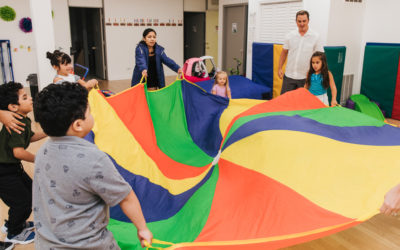Children have an inherent sense of creativity that grows and stretches as their minds develop. Children on the autism spectrum in particular can display a deep sense of creativity and imagination.
Individuals on the spectrum can be extremely creative thinkers and artists as professionals. To get the most out of this potential, having healthy outlets of creativity and creation from a young age is important. In this post, we’ll discuss the link between autism and creativity and the best ways to foster that creativity to help your child make art and develop their cognitive skills.
Creativity is an Asset
A recent study revealed a strong connection between individuals on the autism spectrum and creative thinking. It helped provide sound scientific evidence for the increased rate of divergent thinking in people on the spectrum. When posed with a tool, they are more likely to offer suggestions for alternative uses than their neurotypical peers. Additionally, since they are less likely to be constrained by social norms, they are more prone to thinking outside the box in problem-solving situations.
This creativity, if channeled productively, can be very useful and also produce some amazing results to help cognitive development and make art in its various forms. For one, creativity can help breed resourcefulness which is an invaluable trait for independent adults. Making art can be both an unstructured or structured process that helps children practice their motor skills while using tools to draw, paint or learn an instrument. The sense of pride that completing an art piece brings is also an asset that can improve confidence and self-esteem. All in all, the connection is deep and important.
Creative Outlets and Making Art
Chances are your child has already displayed creativity in a variety of ways. Whether it’s coloring, playing with toys or making music, finding the right channel for that art can be crucial. Much like in school curriculum, it’d be most helpful to dedicate time for art within the home. In your child’s daily routine, try squeezing a few of the following activities into their day:
- Coloring either in a coloring book or on a blank sheet of paper, canvas, whiteboard or sidewalk.
- Drawing freehand or by tracing shapes and objects for reference.
- Making music with toy instruments or even enrolling in lessons that can accommodate your child’s needs.
- Dancing freely or by following along with a video or tutorial.
- Reading a book for fun on their own or with a family member.
All of these activities are not only fun but also amazing ways to help your child’s art and creativity flourish while they explore their natural interests. The best part about it is that you or another family member can be right there with them enjoying the fun.
Children on the Spectrum Have a Knack for Art
Since many children on the spectrum have an intense eye for detail, they can produce some stunning art that is imaginative and fine tuned. On the flip side, their ability to think outside the box and beyond what’s expected of them can be the catalyst for formless wonder that, in its rawest form, is striking and intense. Art can also be a great way to reduce stress and express emotions that may otherwise remain hidden.
Children on the spectrum can have a creative eye that sees possibility everywhere and if we do our part to encourage that art, it can become a valuable skill and hobby.
For more autism and ABA related news, don’t forget to keep up with us on Facebook, Instagram and Twitter.



